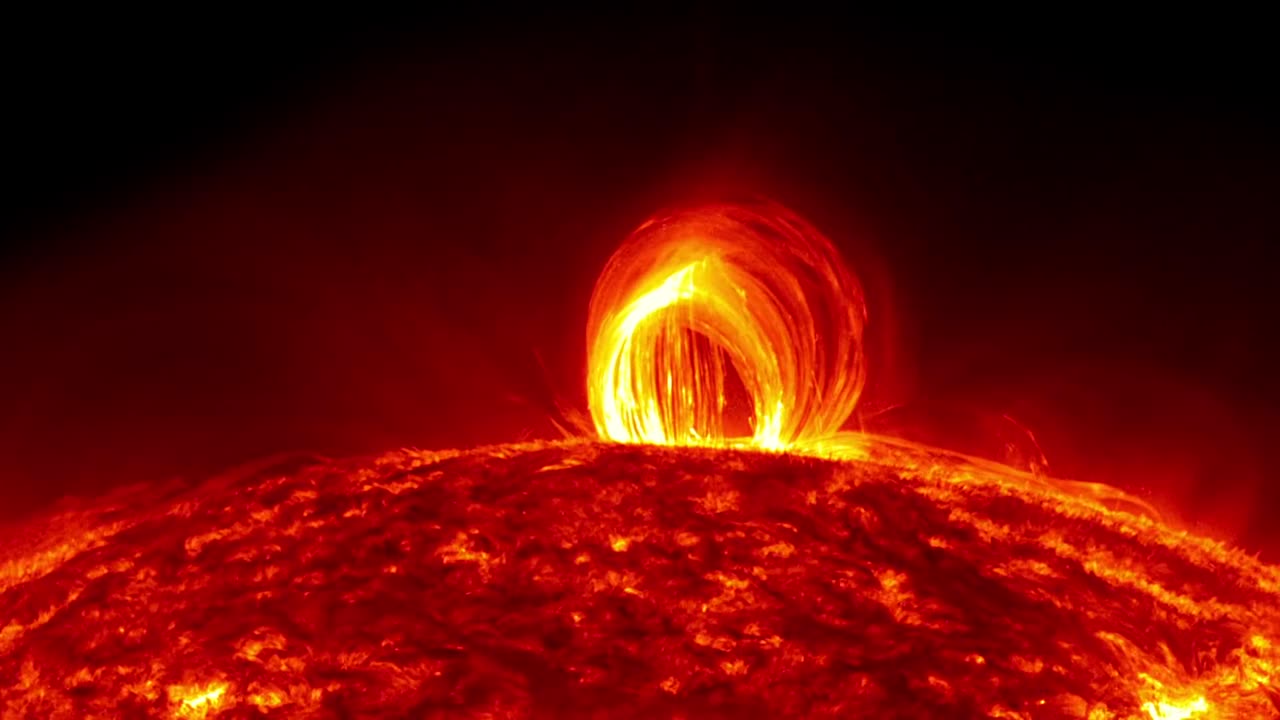Premium Only Content

NASA: Fiery Looping Rain on the Sun
Sun eruptions can exhibit a wide array of characteristics. Some occurrences involve only a solar flare, while others encompass an additional expulsion of solar material termed a coronal mass ejection (CME). Certain events feature intricate mobile structures connected with alterations in magnetic field lines that form loops extending into the sun's outer atmosphere, known as the corona.
A remarkable incident took place on July 19, 2012, wherein the sun displayed all three of these phenomena. Initially, a moderately potent solar flare erupted from the sun's lower right region, emitting light and radiation. Subsequently, a CME shot off into space towards the right. Following that, the sun showcased a captivating manifestation of its magnetic forces – a phenomenon termed coronal rain.
During the ensuing day, the corona's superheated plasma cooled and condensed along robust magnetic fields present in the area. While magnetic fields themselves remain imperceptible, the charged plasma is compelled to follow these lines, creating a vivid appearance in the extreme ultraviolet wavelength at 304 Angstroms. This wavelength highlights material at approximately 50,000 Kelvin. This plasma operates as a tracer, allowing scientists to observe the intricate interplay of magnetic fields on the sun. As the plasma gradually descends back to the solar surface, it outlines the magnetic fields' configuration.
The video footage captures these events, recorded by the AIA instrument on the Solar Dynamics Observatory (SDO). With SDO capturing one frame every 12 seconds, the video plays at a rate of 30 frames per second, translating to 6 minutes of actual time per second in the video. The video's time span spans from 12:30 a.m. EDT to 10:00 p.m. EDT on July 19, 2012.
-
 27:39
27:39
Crypto.com
3 hours ago2025 Live AMA with Kris Marszalek, Co-Founder & CEO of Crypto.com
39.7K3 -
 UPCOMING
UPCOMING
TheAlecLaceShow
48 minutes agoMAGA Pushback Against Flag Burning EO & 600K Chinese Students | Cashless Bail | The Alec Lace Show
16 -
 1:09:18
1:09:18
SGT Report
15 hours agoBIOHACKING 101: MAKING BIG PHARMA IRRELEVANT -- Dr. Diane Kazer
21.5K18 -
 LIVE
LIVE
JuicyJohns
4 hours ago $1.35 earned🟢#1 REBIRTH PLAYER 10.2+ KD🟢
187 watching -
 LIVE
LIVE
The Mel K Show
1 hour agoMORNINGS WITH MEL K - The Future of the Constitutional Republic: Local Action for National Impact 8-26-25
722 watching -
 LIVE
LIVE
The Shannon Joy Show
3 hours ago🔥🔥TACO Trump Rug Pulls AGAIN - Deploying His Fascist Police State In Red States NOT Blue.🔥🔥
241 watching -

Grant Stinchfield
1 hour agoBig Pharma’s Dirty Secret: It Writes the Medical School Curriculum
164 -
 1:10:58
1:10:58
vivafrei
3 hours agoBanning the Burning of the Flag? Raja Jackson Assault & Some Insanely Stupid Takes! NYC Chems & MORE
29.1K31 -
 LIVE
LIVE
LFA TV
6 hours agoLFA TV ALL DAY STREAM - TUESDAY 8/26/25
4,675 watching -
 LIVE
LIVE
Trumpet Daily
1 hour agoTrumpet Daily LIVE | Aug. 26, 2025
373 watching